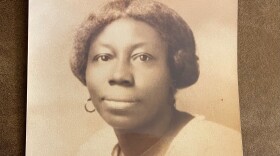
The One Oh One
Season 1-5 are now streaming.
Local discoveries, in-depth conversations and informative stories from the communities that hug Highway 101 along California’s Central, South Coast. From Thousand Oaks to Ventura to Santa Barbara and beyond.
The One Oh One podcast has won a Regional Edward R. Murrow Award, an RTNA 'Best Podcast' award and an LA Press Club award.
-
Cerisa House Wesley was the first African American born in the City of Ventura. The year was 1898. And this was the first documented birth at least. Her life is remarkable not just because of her historic birth, but because despite her being a qualified nurse she was never allowed to use her skills in a hospital setting because of the color of her skin. This is the story of a Black nurse no hospital would hire.
-
There are over two million undocumented people living in California. No matter your opinion on illegal immigration, industries like agriculture have a demand for these workers. They’re here. Working and living. In this episode of The One Oh One, we wanted to give you a glimpse into the lives of the undocumented and specifically those that have been 'without papers' a really long time. We're talking decades.
-
Once upon a time there was a clam, a butterfly and a fox. They all called the central California Coast their home. They lived happily among trees, on mostly uninhabited islands and hidden under the sand on the beach.But then they all almost disappeared. Why? Some because of human activity – for others, who knows.But this tale does have a happy ending because all these creatures are coming back… some, really quickly.On this episode of The One Oh One – the Pismo Beach Clam, the Monarch Butterfly and the Channel Islands Fox... a comeback story.
-
One in three high school students across the U.S. have reported persistent feelings of sadness or hopelessness. In the decade leading up to 2019 suicide rates went up 57% among teens and young adults.That’s according to a Surgeon General report which says young people are experiencing a mental health crisis.I wanted to find out if these grim statistics were being reflected locally. Sadly the answer is yes. I had no idea how bad it was.In this episode of The One Oh One, the state of youth mental health on California’s Central, South Coast, why this is happening and those trying to help.
-
There’s a spot on Highway 101 in Agoura Hills, California – it’s pretty inconspicuous. There’s brown and green rolling hills on either side of the highway. Homes are sprinkled here and there. And then a small metal gate that leads off on a hiking trail. You probably wouldn’t know it, but soon this spot will be the location of the world’s largest animal crossing.This crossing will reconnect habitats that have been cut off from each other for three quarters of a century and it’ll do it over a highway that is constantly buzzing with cars. It’s a massive project full of firsts.On this episode of The One Oh One, the building of the world’s largest animal crossing.
-
This is The One Oh One — a podcast where we journey up and down highway 101 along California’s central and south coasts sharing discoveries, stories and conversations. From Ventura to Santa Barbara to San Luis Obispo and beyond.Our second season launches April 1. In it we'll tell stories of struggle, perseverance, grit and triumph.
-
On a mountain top ranch, a seaside strawberry farm and an organic farm along a busy freeway, farmers are practicing carbon capture. We look at if it’s making a big enough difference in the fight against climate change.
-
We follow some local scientists as they set out to discover how polluted the natural environment is with microfibers.
-
The impact of exceptional drought on one county’s water supply and how drought and climate change will require big changes in water infrastructure.
-
Santa Barbara County has to create almost 25,000 new homes over eight years to address the housing crisis in the county. The City of Santa Barbara has to create around 8,000 homes. Can they do it? Historic data says no.











